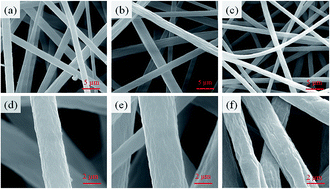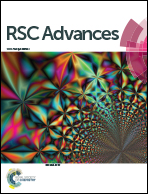Fractionated crystallization, polymorphism and crystal transformation of poly(butylene adipate) confined in electrospun immiscible blend fibers with polystyrene
Abstract
Utilizing electrospun immiscible blend fibers of poly(butylene adipate) (PBA) and polystyrene (PS) and following coating by the high glass transition temperature poly(4-tert-butylstyrene) (P4tBS), confined PBA specimens in nanometer space were effectively prepared. The effect of a physical confinement environment on the PBA crystallization behavior, polymorphism and crystal transformation was adequately investigated. For non-isothermal crystallization, the crystallization ability and melting of subsequent heating was obviously suppressed in the nanospace compared with in the bulk state. Especially, the confined PBA could show fractionated crystallization due to the existence of different sizes of nanospace and the crystallization mechanism was either 1D crystal growth after heterogeneous nucleation or homogeneous nucleation dependent on the domain size. The temperature-dependent polymorphism and crystal transformation is also affected by the nanometer confinement. The formation temperature of the pure β crystal shifts slightly toward a high temperature and the β → α crystal transformation becomes easier for confined PBA compared with bulk PBA. More interestingly, the 2D IR correlation spectra revealed that the β → α crystal transformation in the nanospace takes the melt-recrystallization path, which is quite different from the usually solid–solid transformation process.


 Please wait while we load your content...
Please wait while we load your content...